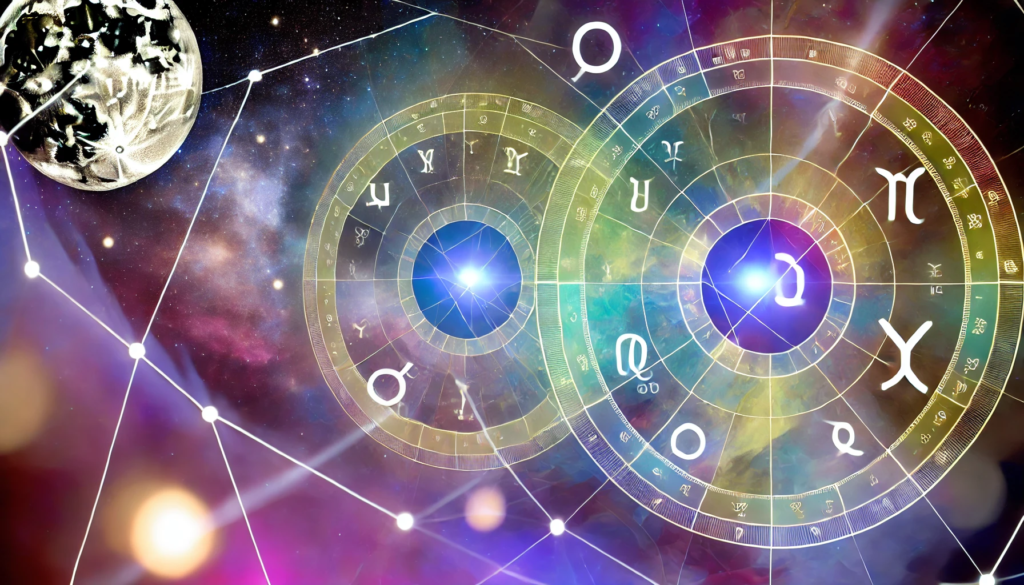Synastry is the branch of astrology that deals with the study of relationships. Such relationships can be familial, romantic, professional or even between a person and an organization or an important date. By analyzing the dynamics created when two people are connected, synastry helps us understand how the energies of their individual horoscopes interact and how these energy fields affect their relationship. Let's look at the basic principles of synastry and how we can use them to explore our relationships.

1. Comparison of Horoscopes
The first and most basic principle of synastry is the comparison of the natal charts of two individuals. This involves studying the signs, houses, and planetary positions in each chart to understand how the characteristics of one person compare to the characteristics of the other. Listed below are just a few of the most important factors.
- Sun and Moon: The relationship between the Sun and Moon in the two charts is critical, as the Sun represents basic identity and the Moon represents emotions. A harmonious connection between these two can indicate mutual understanding and emotional security.
- Venus and MarsVenus represents love and values, while Mars represents desire and energy. The aspects between these planets indicate sexual chemistry and erotic attraction in the relationship.
- Hermes: Mercury represents communication. Harmony between the Mercuries of the two individuals is important for good communication and intellectual compatibility.
2. Aspects Between Planets
Aspects are the angular relationships between the planets in the two charts. The most important aspects in synastry are conjunctions, squares, triangles and oppositions. Each aspect has its own significance and offers different clues to the dynamics of the relationship.
- Conjunction (Conjunction): When two planets are close to the same degree, this creates an intense energy, either positive or negative, depending on the nature of the planets.
- Triangle (Trine): This aspect creates a natural harmony and energy flow between the planets, indicating compatibility and easy communication.
- Square (Square): The square indicates tension and challenges, but also potential for growth through conflict and conflict resolution.
- Opposition (Opposition): The contrast brings tensions and polarity, but also provides the opportunity for balance and complementarity.
3. Sharing of Houses
Each planet in one person's natal chart is placed in a specific house in the other person's chart. The houses involved indicate the areas of life where the other person will have the most influence.
- The 1st House: How one person influences the personality and the general course of the other.
- The 5th House: Relationships related to love, creativity and pleasure.
- The 7th House: House of marriage and long-term partnerships, extremely important in synastry.
- The 8th House: Represents intimacy, shared financial affairs and deep psychological connections.
4. Advanced Maps and Relationship Maps
In addition to comparing the two natal charts, there are special charts created to study the relationship as a separate entity.
- Advanced Map: This map is created by taking the average of the planetary positions of two people. It represents the relationship as a separate entity and shows the dynamics and challenges of the relationship.
5. Harmony and Evolution
Synastry is not only about compatibility, but also about evolution. A relationship can have challenges, but these can be opportunities for personal growth and transformation. Synastry helps us to understand not only the strengths of the relationship but also the areas that require effort and understanding.
In summary, synastry is a powerful tool that helps us to understand our relationships more deeply. By studying natal horoscopes, aspects, houses and composite charts, we can gain valuable insights that will guide us towards harmony and personal growth through our relationships.
